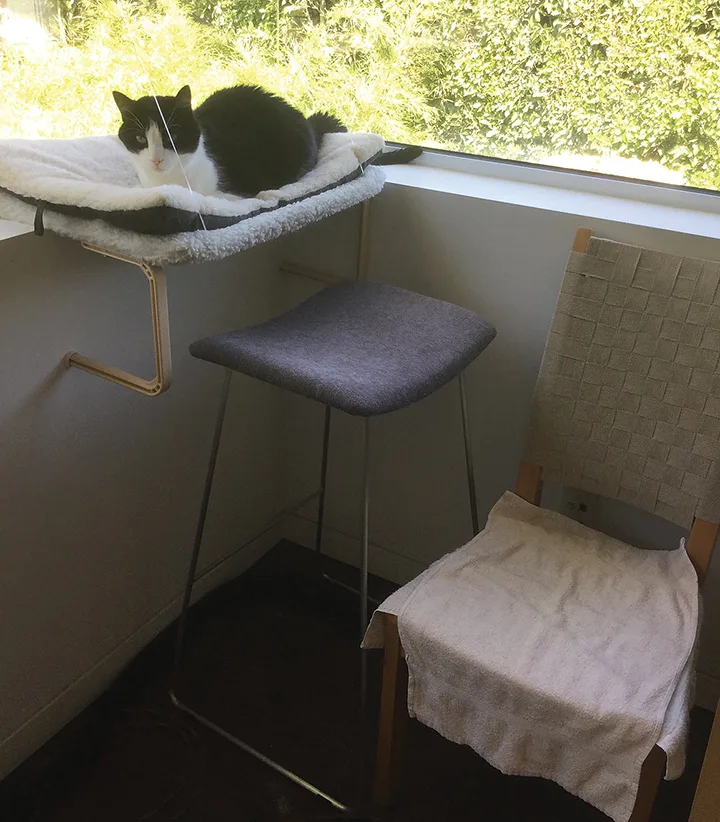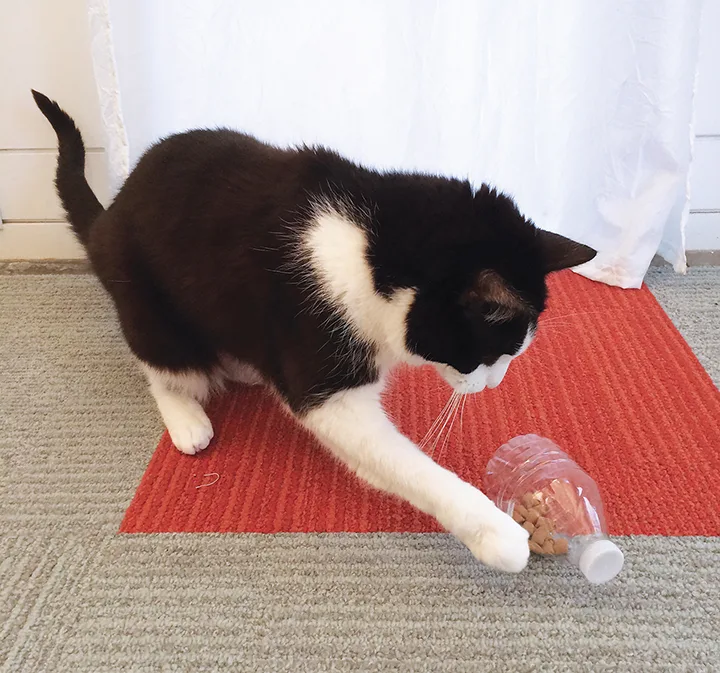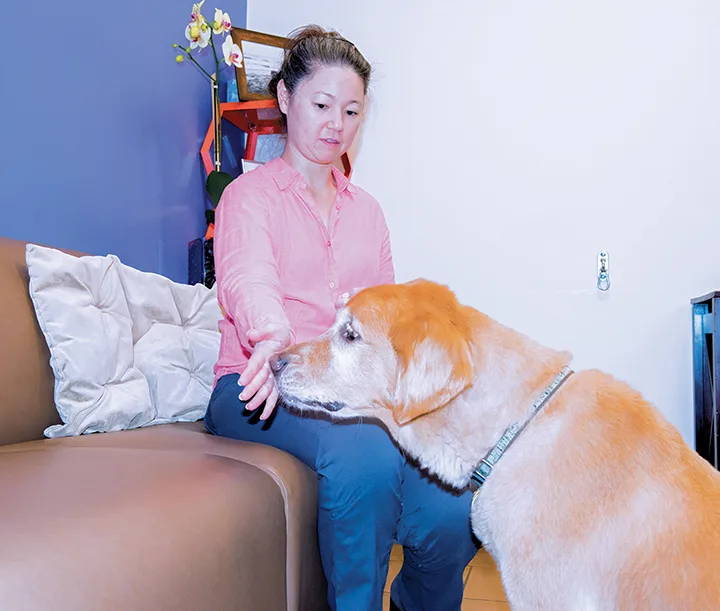Environmental Enrichment for Senior Dogs & Cats
Karen Sueda, DVM, DACVB, VCA West Los Angeles Animal Hospital, Los Angeles, California
Julie Cho, DVM, VCA West Los Angeles Animal Hospital

Offering enrichment for geriatric or senior dogs and cats can slow age-related cognitive decline and strengthen the human–animal bond. Enrichment strategies can be tailored to the individual patient to enhance different modalities (eg, physical, sensory, mental, social).
Why Enrich an Aging Brain?
With the advancement of veterinary care, dogs and cats are generally living longer. As with humans, dogs and cats experience age-related cognitive decline. Deterioration may manifest as behavior changes collectively referred to as cognitive dysfunction syndrome (CDS). Dogs and cats clinically affected by cognitive dysfunction may exhibit behavior signs including:
Disorientation
Altered or reduced social interactions
Sleep–wake cycle change (eg, nighttime wakefulness)
House soiling
Excessive vocalization
Decreased activity level
Increased anxiety or aggression
As the pet population ages, veterinarians are likely to see an increasing number of pets with CDS.1-3 In one study, 28% of dogs 11 to 12 years of age and 68% of dogs 15 to 16 years of age had at least one sign of CDS,1 and 28% of cats 11 to 14 years of age and 50% of cats 15 years of age or older also exhibited at least one behavior change attributable to CDS.2 Unless queried by a clinician, owners may not recognize CDS signs, which can lead to underreporting and underdiagnosis.4-5 In an epidemiologic survey study, 5% of dogs 10 to 12 years of age and 41% of dogs older than 14 years showed signs consistent with CDS, but only 1.9% had been diagnosed with CDS by a veterinarian.5
Cognitive care and environmental enrichment may reduce age-related changes in the brain.6 Owners can increase mental stimulation in their senior pet through physical activity, environmental enrichment, and social interaction.
Treatment at a glance
Special Considerations for Older Dogs & Cats
It is important to assess all aspects of a patient (eg, history, physical state, sensory capabilities, mental state) when making enrichment recommendations. Older patients may have concurrent medical or behavior issues that must be accommodated, so it is important to assess all attributes of each patient.
Physical Limitations
Many older animals suffer from osteoarthritis or neurologic conditions that limit physical activity. For such patients, enrichment activities should be tailored to minimize pain, discomfort, and injury risk (Figure 1). For example, providing nonslip surfaces (eg, rugs, mats) may provide more secure footing and encourage pets to be more active.

A 12-year-old golden retriever with osteoarthritis playing fetch with a rolled tennis ball
A series of steps or platforms may allow elderly cats access to preferred, elevated resting areas they can no longer reach by jumping (Figure 2). For pets with exercise intolerance or decreased stamina, focus should be on mental or sensory stimulation rather than physical activity.

Chairs of various heights were added to allow this 15-year-old cat continued access to a favorite window perch.
Decreased Sensory Capabilities
Eyesight, hearing, and olfaction may be reduced in elderly pets. For these patients, training may be modified by using visual (ie, hand) signals or by using verbal or tactile cues (eg, light tap on shoulder).
Anxiety & Stress
Abrupt changes to environment or routine may stress older pets, particularly cats. Enrichment plans should be introduced slowly or limited to one or 2 minor changes at a time. Once a pet is accustomed to these modifications, additional activities may be added.
Physical Exercise
Acute and chronic exercise have both been shown to improve memory in elderly beagles.7 Exercise recommendations should take each pet’s physical abilities and health status into consideration. Slow, controlled leash walks, swimming, or hydrotherapy may be good options for dogs with joint disease or limited mobility. To increase activity, cats may be encouraged to chase toys or hunt for treats throughout the house.
Sensory Stimulation
Olfactory, visual, and auditory enrichment may be particularly beneficial, especially for ill or poorly mobile patients. For example, dogs that cannot walk but enjoy social and sensory outdoor enrichment may be taken in carriers, in strollers, or on car rides. Cats may continue to have outdoor access under supervised conditions (eg, leash walks, secure outdoor enclosures).
Introducing new odors and unfamiliar items (eg, a shopping bag or cardboard box for cats, a family member’s shirt for dogs) can offer olfactory stimulation. However, if the pet has a history of urine marking, new objects or odors may trigger the behavior.8 Species-specific pheromones, which have been offered to captive animals as enrichment, may be used instead.9 Pheromones may also decrease anxiety, which often increases with age.2,10 In addition, approximately 68% of cats respond to catnip, which may produce a euphoric state that results in characteristic sniffing, licking, rubbing, and rolling.11
For increased visual and auditory stimulation, technical or electronic options can be considered. Classical music has been shown to increase resting behavior in kenneled shelter dogs,9 and studies have shown that some dogs and cats show interest in video images, particularly of conspecifics and moving objects.9 Various apps and channels exist to entertain pets, particularly cats, with cartoon mice or other moving images. Nonvideo visual enrichment for cats may include positioning a bird feeder outside a window or providing a covered fish tank in the house.
Positive Reinforcement Training
To assess the effects of aging on cognitive ability, researchers have trained dogs and cats to perform specific tasks and then evaluated how well they performed these tasks at different ages. Older dogs and cats, particularly those with CDS, tended to show poorer responses as compared with younger animals2,4,10; however, continuing to teach senior dogs new tricks slows age-related cognitive decline. Aged beagle dogs enrolled in a cognitive enrichment program—which included toys rotated weekly, ongoing training, housing with a kennelmate, and twice-weekly walks between testing periods—had fewer errors when taught a new task as compared with age-matched dogs that did not receive mental enrichment when taught the same task.6
Mental enrichment may be provided to cats and dogs at home via puzzle toys and actively teaching new behaviors. Food, treats, or toys may be hidden around the house for the pet to find or concealed in boxes or under towels that the pet must manipulate to find (Figure 3). Many commercial treat-dispensing puzzle toys are available; treats are placed in these toys and pets must determine how to extract them.

A 15-year-old cat playing with a treat-dispensing toy made from a plastic water bottle with holes cut in the side
For patients with physical limitations, owners can teach commands that do not require extensive movement, such as targeting (ie, touching a hand or object with the nose; Figure 4), giving a paw, lying down on their bed, and choosing a treat hidden in an owner’s right or left hand (eg, “right or left”).

A 10-year-old golden retriever learning to target
Strengthening the Bond
Social enrichment is an essential part of the enrichment process. Senior pets may not be physically capable of seeking attention and therefore may be overlooked in a busy household. Daily positive attention, whether through playing, training, exercising, or sitting with the pet, should be recommended to all owners of older pets.
CDS = cognitive dysfunction syndrome